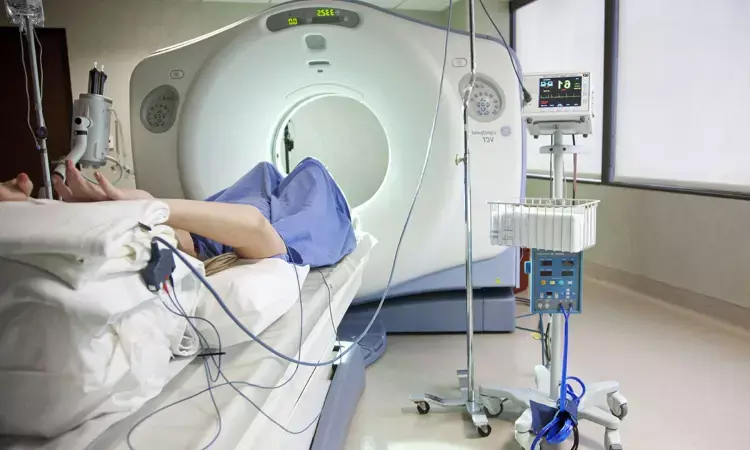- Home
- Medical news & Guidelines
- Anesthesiology
- Cardiology and CTVS
- Critical Care
- Dentistry
- Dermatology
- Diabetes and Endocrinology
- ENT
- Gastroenterology
- Medicine
- Nephrology
- Neurology
- Obstretics-Gynaecology
- Oncology
- Ophthalmology
- Orthopaedics
- Pediatrics-Neonatology
- Psychiatry
- Pulmonology
- Radiology
- Surgery
- Urology
- Laboratory Medicine
- Diet
- Nursing
- Paramedical
- Physiotherapy
- Health news
- Fact Check
- Bone Health Fact Check
- Brain Health Fact Check
- Cancer Related Fact Check
- Child Care Fact Check
- Dental and oral health fact check
- Diabetes and metabolic health fact check
- Diet and Nutrition Fact Check
- Eye and ENT Care Fact Check
- Fitness fact check
- Gut health fact check
- Heart health fact check
- Kidney health fact check
- Medical education fact check
- Men's health fact check
- Respiratory fact check
- Skin and hair care fact check
- Vaccine and Immunization fact check
- Women's health fact check
- AYUSH
- State News
- Andaman and Nicobar Islands
- Andhra Pradesh
- Arunachal Pradesh
- Assam
- Bihar
- Chandigarh
- Chattisgarh
- Dadra and Nagar Haveli
- Daman and Diu
- Delhi
- Goa
- Gujarat
- Haryana
- Himachal Pradesh
- Jammu & Kashmir
- Jharkhand
- Karnataka
- Kerala
- Ladakh
- Lakshadweep
- Madhya Pradesh
- Maharashtra
- Manipur
- Meghalaya
- Mizoram
- Nagaland
- Odisha
- Puducherry
- Punjab
- Rajasthan
- Sikkim
- Tamil Nadu
- Telangana
- Tripura
- Uttar Pradesh
- Uttrakhand
- West Bengal
- Medical Education
- Industry
Invasive Angiography Adds Nothing to CCTA Alone for risk stratification of patients with stable CAD: ISCHEMIA

Canada: An analysis of the ISCHEMIA trial revealed that both invasive coronary angiography and coronary CT angiography (CCTA) add incremental information over baseline characteristics for predicting risk in stable coronary artery disease (CAD) patients.
The findings, published in JACC: Cardiovascular Imaging, also show that invasive angiography addition on top of CCTA does not provide any more prognostic information over the less invasive imaging test alone.
The data reaffirm the prognostic usefulness of assessing coronary anatomy with CCTA compared to invasive angiography and should reassure physicians who are apprehensive about using CT in certain patients, such as those with a high pretest likelihood of CAD.
According to the researchers, "With modern CT, with good image quality and experienced readers, we can do very well, even in complex CAD. We are not saying you other tests should not be considered in high-risk patients, but you shouldn’t necessarily avoid doing CT because you think it's not going to have value."
The new study, published as a research letter, builds on prior work from the ISCHEMIA trial that revealed that CCTA has excellent anatomical agreement with invasive angiography for the identification of angiographically significant CAD. The analysis was performed by Jonathon Leipsic, Department of Imaging St Paul's Hospital, Vancouver, British Columbia, Canada, and colleagues.
Invasive angiography has been the gold standard for the diagnosis of coronary disease, but CCTA has emerged as a less invasive test with similar diagnostic utility. The current US chest pain guidelines recommend CCTA for CAD diagnosis to aid in risk stratification and to guide treatment in stable patients at intermediate-to-high risk.
To date, no head-to-head studies have compared invasive angiography with CCTA for risk stratification, but the ISCHEMIA trial data allowed researchers to evaluate whether invasive angiography added anything to CCTA for predicting the risk of all-cause mortality and myocardial infarction (MI).
The analysis included 1,418 patients (median age 64.2 years; 19.5% female) randomized to the invasive strategy with both an interpretable CCTA and an invasive coronary angiogram.
The number of disease vessels, defined as stenosis of 50%, on invasive angiography and CCTA added incremental value to risk prediction over baseline characteristics alone. However, the number of diseased vessels on invasive angiography—defined as a stenosis of 50% or 70%—did not add anything to the CCTA data for predicting all-cause mortality or MI.
The use of the anatomical Duke Jeopardy Score, which assesses both lesion severity and location, did go beyond the CCTA-derived segment stenosis and segment involvement scores.
Reference:
Leipsic J, Ben Zekry S, Tzimas G, Broderick S, Mancini GBJ, Hague CJ, Budoff MJ, Rockhold FW, Chaitman BR, Kirby R, Stone GW, Ali ZA, Min JK, Hochman JS, Maron DJ, Reynolds HR; ISCHEMIA Research Group. Comparative Prognostic Utility of Coronary CT and Invasive Angiography: Insights From the ISCHEMIA Trial. JACC Cardiovasc Imaging. 2024 Mar 4:S1936-878X(24)00067-6.
Dr Kamal Kant Kohli-MBBS, DTCD- a chest specialist with more than 30 years of practice and a flair for writing clinical articles, Dr Kamal Kant Kohli joined Medical Dialogues as a Chief Editor of Medical News. Besides writing articles, as an editor, he proofreads and verifies all the medical content published on Medical Dialogues including those coming from journals, studies,medical conferences,guidelines etc. Email: drkohli@medicaldialogues.in. Contact no. 011-43720751


